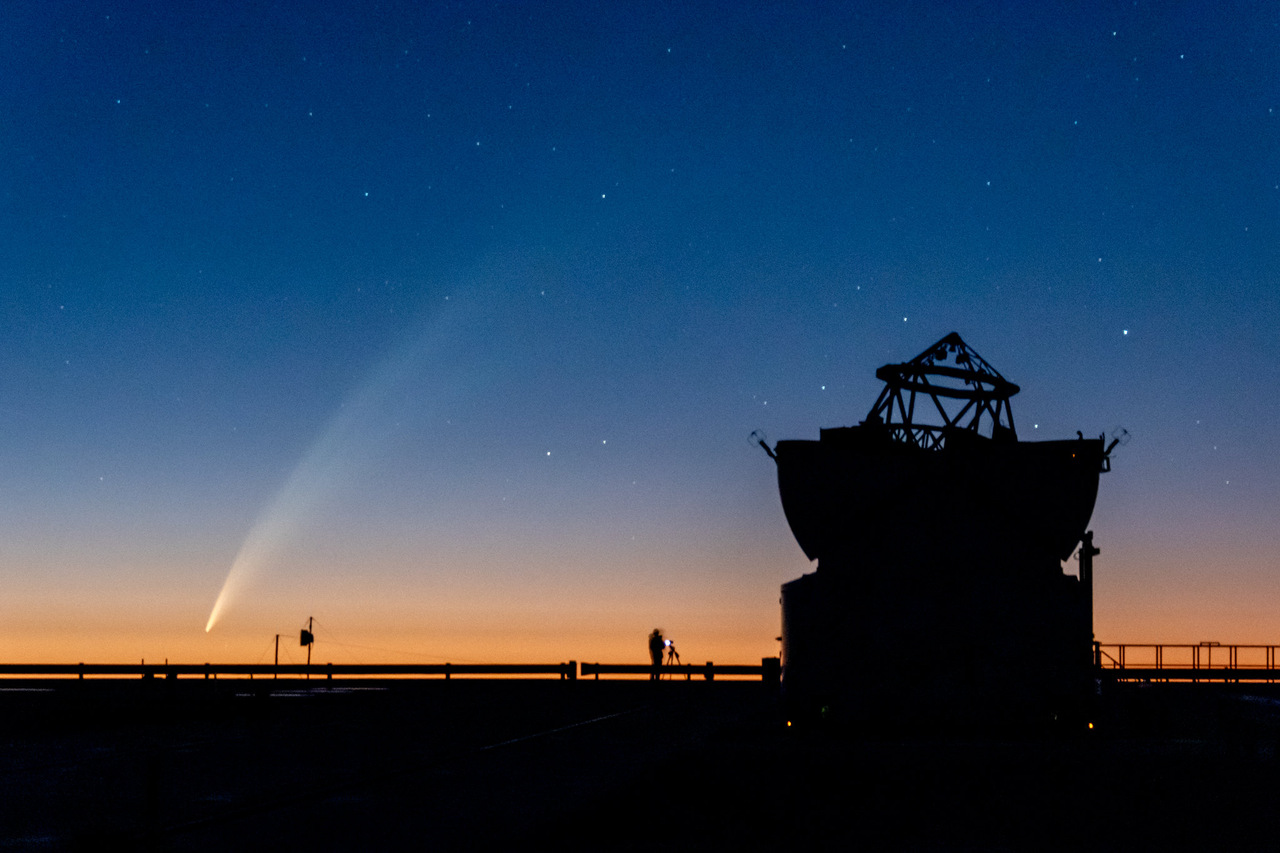Sensational: Hungarian astrophotographer captures a comet falling apart!

Hungarian astrophotographer Lionel Majzik has made headlines in the scientific community with his groundbreaking discovery: comet C/2024 G3 (ATLAS), which was hailed as one of the brightest comets of the year, is disintegrating. Majzik’s observations, made using a remote-controlled telescope in Chile, were the first to confirm this celestial phenomenon, drawing attention from major science outlets like Live Science, Space.com, and IFL Science.
Discovered in April 2024, the space rock was initially expected to put on a spectacular show. It reached its perihelion, or closest approach to the Sun, on 13 January, coming within 0.09 astronomical units—about 13.5 million kilometres. However, the intense heat and radiation appear to have caused thermal stress, leading to cracks in its nucleus and its subsequent fragmentation, LiveScience reports.

First signs of disintegration
Majzik’s photographs captured between 18 and 20 January revealed dramatic changes. While ATLAS’ tail grew brighter and more expansive, its coma, the glowing envelope around the nucleus, significantly dimmed. By 19 January, the once-visible nucleus had transformed into a streak of light in the tail, signalling its likely disintegration. “At first, I suspected an imaging error,” Majzik shared, “but after a thorough analysis of the raw data, it became clear that the nucleus of C/2024 G3 (ATLAS) had broken apart.” His findings were later confirmed by astronomer Krisztián Sárneczky and supported by additional international observations.
Possible disintegration of C/2024 G3 (ATLAS)?
— Lionel Majzik (@lionelm_astro) January 20, 2025
Following up on my previous report, my latest images further confirm significant changes in the coma!#comet #c2024g3 #atlas #c2024g3atlas #disintegration pic.twitter.com/iOqyAGI6R0
What happens next?
These space objects are often called “dirty snowballs,” are made up of ice, dust, and rock. When they approach the Sun, the intense heat sublimates the ice, creating the coma and tail that make them so visually striking. However, the same solar radiation can also destabilise the nucleus, causing cracks and releasing gas and dust in a process called outgassing. Such disintegration events are not uncommon. For example, similar phenomena have been observed with other bright comets, including the Halloween comet (C/2024 S1) and comet C/2023 A3. While some comets survive their close encounters with the Sun, others succumb to the immense thermal stress, scattering their fragments along their orbital paths.
A scientific opportunity
Despite its fragmentation, C/2024 G3 (ATLAS) continues to offer valuable research opportunities. The debris cloud now visible in its place provides scientists with a chance to study the internal structure of the comet. According to Majzik, such observations can yield insights into the composition and behaviour of cometary nuclei, much like the disintegration of comet C/2011 W3 (Lovejoy) did in 2011. While the comet’s dazzling display has come to an end, its story underscores the unpredictable nature of these celestial wanderers. For now, C/2024 G3 (ATLAS) embarks on its long journey back to the Oort Cloud, leaving behind a trail of data and wonder for astronomers to analyse.
Read also:
- Hungarian astronomer discovers previously unknown near-Earth asteroids
- Hungarian-led international research team discovers young star’s planet-forming zone





